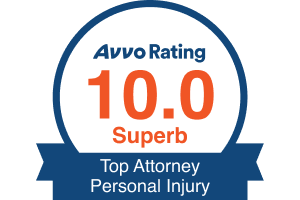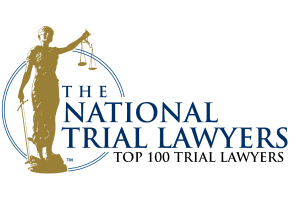Preserving Evidence and Legal Strategies for Destroyed Evidence
One the most important duties attorneys have in handling injury matters arising out of pedestrian accidents is to properly preserve evidence related to how the accident occurred and to address the absence of any evidence which has been destroyed by the time the attorney commences his or her investigation. Very often a client who has been injured is not able to adequately explain precisely how the injury occurred unless and until an attorney has properly investigated the accident. If the individual is severely injured, they may have no recollection whatsoever of how the pedestrian accident took place. This makes it even more imperative for the attorney to begin an investigation of the pedestrian accident as soon as it is reasonably possible after being retained.
A. Eyewitnesses – – How to Identify and How to Preserve their Testimony
When investigating a pedestrian accident, it is extremely important to initially identify all individuals who may be eyewitnesses to the incident. If the accident involves a vehicle striking a pedestrian, very often the police report will list witnesses to the collision. Unfortunately, bystanders do not always remain at the scene after the police and emergency personnel have arrived. Therefore, information regarding the witnesses is not always reported by the investigating officer. In these circumstances, an attorney must resort to other methods to identify witnesses to a collision.
One method of locating eyewitnesses to a collision or fall is to conduct a survey of any nearby businesses and homes to determine whether or not anyone observed the collision. While an attorney may which utilize a private investigator for these surveys, very often, an attorney can accomplish this investigation on his or her own when initially traveling to the location and reviewing it. Even if an individual indicates they did not see the collision or fall, the attorney should leave contact information with the individual in the event they become aware of some other individual who did witness the incident. In addition, an attorney may find it helpful to post signs around the area in an effort to identify witnesses. Very often, if a pedestrian accident has occurred at a busy intersection or an area with regular commuters, individuals who witnessed the accident may observe the sign and contact counsel.
Once witnesses are identified, it is extremely important to obtain a written sworn statement from the witness with respect to their observations. Initially, it is best to conduct a thorough interview of the witness and take extensive notes regarding their observations. The attorney may wish to record the interview or, alternatively, after initially interviewing the witness, the attorney may then wish to conduct a recorded interview limited to the pertinent facts of the incident. In either event, the attorney should obtain an affidavit under oath from the witness regarding any information they wish to preserve. Affidavits are an excellent manner in which to lock in the witness’s testimony should the witness at a later time wish to recant something he or she stated. Once litigation is commenced, if the witness is a key witness to proving liability in a case, it is important to arrange for his or her deposition to avoid the potential of their unavailability at the time of trial
B. Cameras – – Obtaining and Preserving Film Footage Before Litigation Starts
Another excellent source of evidence with respect to a pedestrian accident is film from a traffic camera or surveillance film of the pedestrian accident. In motor vehicle accident matters, many intersections are now equipped with cameras so that citations may be issued to vehicles failing to stop at a red traffic signal. Since these cameras film substantial portions of the intersection, they may provide excellent evidence of how the collision with the pedestrian occurred. Also, government entities are also putting in place traffic cameras so that commuters can readily observe traffic conditions in areas in which they are going to travel. When investigating a pedestrian accident, the attorney should inspect the area of the collision to determine whether or not any cameras are present. If so, the attorney should immediately make a request to the government entity for the film from the date of collision.
Cameras can also play an important role in sidewalk defect cases. Very often, retailers have security cameras which cover the area near the entrances and exits of their stores. If an individual has fallen at a retail establishment, the attorney should investigate the presence or absence of any cameras which may have filmed the fall. Such film may either support or defeat the individual’s potential claim related to the sidewalk being unsafe. However, it is better for the attorney to know at the outset of the matter of the existence of such film and whether or not it will be supportive of the claim that is going to be pursued.
C. When to Use a Forensic Photographer/Videographer
Depending upon the size of the case, an attorney may wish to consider the use of a forensic photographer and/or videographer to record the scene of the collision or the location of an individual’s fall. The use of a forensic photographer/media/video/grapher should be considered when the area involving the incident requires wide-angle photographs, detailed close-up photographs and exploration of traffic patterns. It is especially helpful to utilize a forensic photographer/media/video/grapher when a road defect issue is present. Such defects need to be properly recorded in photographs and videos so that they may be shown to a jury at the time of any trial. Often such defects are not as easily observed on film absent a skilled photographer adjusting such factors as light, speed and view to give a proper perspective of the road defect issue. It is important to note that every case does not require a forensic photographer/media/video/grapher. Quite the contrary, the use of such experts is generally the exception and not the rule in pedestrian accident cases. However, an attorney with a seriously injured client should certainly consider the use of such experts if they believe that it will enhance the presentation of the case at the time of any trial.
D. Open Records Act Requests – A Powerful Pre-litigation Tool
Government entities gather enormous amounts of information related to both private and public activities. This information is readily available to any party simply who simply sends the government entity an open records request or a freedom of information request. Under federal law, all individuals have a right to request information from the federal government with certain exceptions related to classified or protected information. See 5 U.S.C.A § 552, et seq.. Likewise, most states have open records act request statutes which permit individuals to request information from their local and state governments. O.C.G.A § 50-18-70, et seq. Again, this information is readily available with the exception of classified information or information which is subject of a governmental investigation which has not yet been concluded.
As previously discussed, government entities often have video cameras at intersections and traffic cameras observing busy roadways. An attorney should immediately send an open records act request to a government entity when involved in investigating a collision at an intersection or other roadway which is known to have these cameras.
When an attorney is investigating a sidewalk defect case, it is extremely important that the attorney send an open records act request to the government entity responsible for constructing the sidewalk to obtain all information regarding when the sidewalk was built. Further, any maintenance requests related to the sidewalk should also be retained by the government entity as well as records related to repairs performed on the sidewalk. Evidence that the government entity has had prior complaints regarding the same area of sidewalk where the plaintiff has fallen is extremely important in litigation against the government entity because it shows notice which creates a duty to repair the subject sidewalk. When a city has not received notice of defects in the sidewalk, they are very often able to escape liability for a pedestrian fall. Dreitling v. City of Shreveport, 12 So.3d 457 (2009).
Another area which is ripe for an open records act request are pedestrian accidents involving a road defect. The attorney should initially request records related to the design of the subject roadway, construction of the roadway, complaints regarding the road and any repairs. Likewise, an attorney may wish to consider requesting records related to other accidents which have occurred at the same location. All of this information provides a wealth of knowledge to the attorney in preparing a road defect case. It’s important to note that this information should be gathered prior to the commencement of litigation so that the attorney can better assess the chances of success in the litigation and can retain appropriate experts to pursue the matter.
E. Spoliation by Defendants – Important Pre-litigation Steps to Preserve the Claim and Strategies after Suit is Filed
Regardless of whether or not a private or public entity is involved, it is extremely important that an attorney endeavor to preserve any evidence which may be destroyed, either intentionally or unintentionally, by the potential defendant or other entities. Generally, when a defendant who is aware that litigation may arise out of an incident knows of evidence which is pertinent to how the incident occurred, the defendant is under an obligation to preserve that evidence. 79 Fordham L.Rev. 2005, The Preservation Obligation: Regulating and Sanctioning Pre-Litigation Spoliation in Federal Court (2011). Accordingly, an attorney representing an injured pedestrian should send letters by certified mail, return receipt requested, to any potential defendant or other individual warning them not to destroy any evidence. Such spoliation letters are an excellent tool for an attorney who is seeking to preserve evidence as they investigate a claim.
A defendant who does destroy evidence after being placed on notice is subject to severe sanctions by the court. At a minimum, the jury will generally be informed that such evidence existed, that the defendant destroyed the evidence and that the jury is entitled to presume that the evidence would have been adverse to the defendant who destroyed the evidence. Brown v. Chertoff, 563 F.Supp.2d 1372 (S.D. Ga., 2008). However, courts are empowered to grant far greater sanctions when evidence is spoiled. Such sanctions include the imposition of factual stipulations which are adverse to the defendant who destroyed the evidence as well as the striking of the defendant’s answer. Flury v. Daimler Chrysler Corporation, 427 F.3d 939 (11th Cir. 2005) (Plaintiff’s complaint dismissed due to failure to preserve vehicle in product liability case against manufacturer); Kroger Company v. Walters, 319 Ga.App 52, 735 Se.2d 99 (2012) (Trial court’s decision to strike answer due to spoliation of video upheld by court). While such sanctions are severe, they are necessary to ensure that evidence that is relevant to a particular incident is preserved for the jury’s consideration. While it is possible for an attorney to argue for spoliation sanctions in the absence of sending a spoliation letter, the plaintiff’s position regarding such sanctions is greatly enhanced when a letter has been sent and it can be shown that the letter was been received or refused by defendant who later destroys evidence.







